Oil and Water
There’s something very important about oil and water that you probably already know: oil doesn’t mix with water! That explains why oil spills on the ocean float on […]
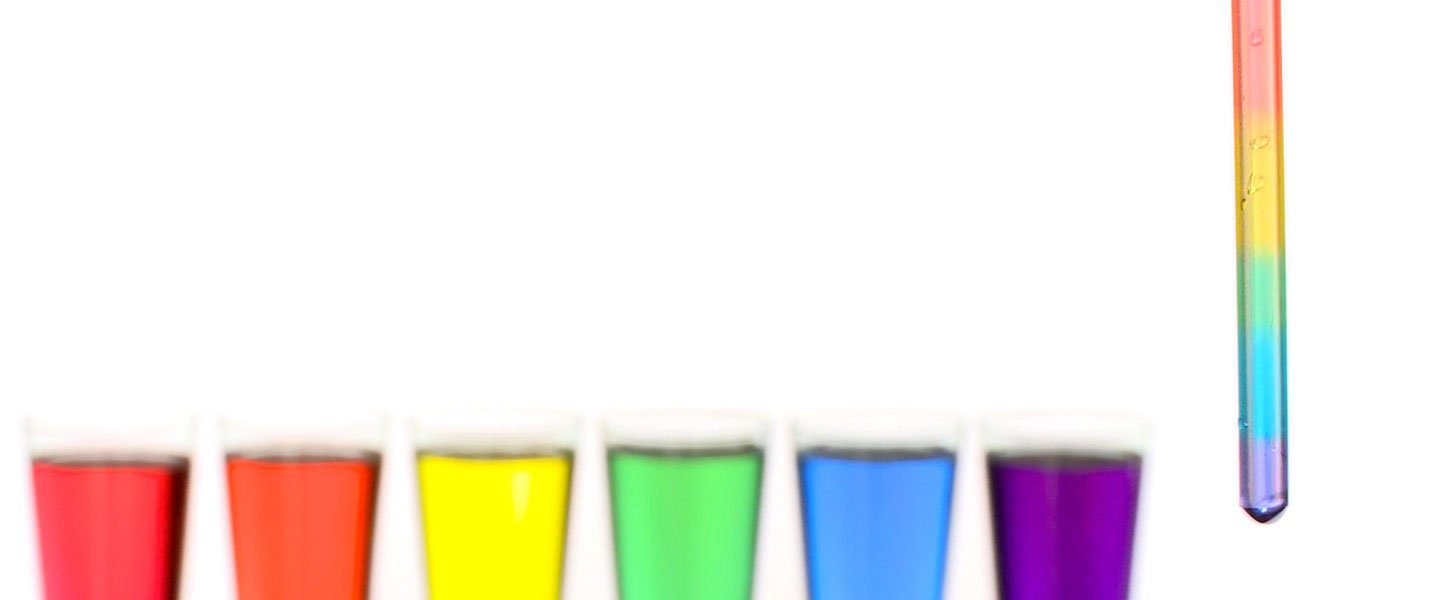
Explore the science of density as you learn how liquids of different densities stack on top each other. A simple combination of some sugar and water with vivid colors leads to an awesome science experience about density.

Fill each of the six glasses with water. NOTE: The glasses need to be stable and about as deep as the straw is long. As you fill the straw with solutions, it has to be plunged deeper and deeper into the liquids.
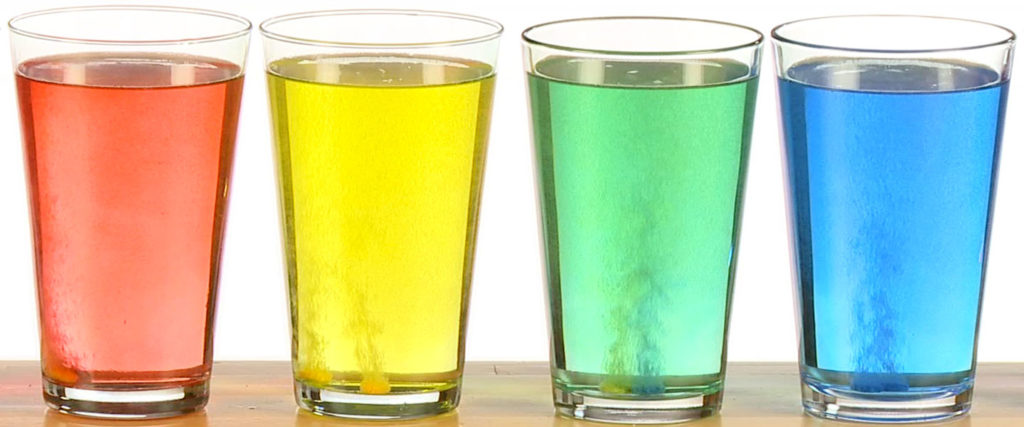
Use coloring tablets or food coloring to dye the water a different, bright color in each glass. Stir it completely.
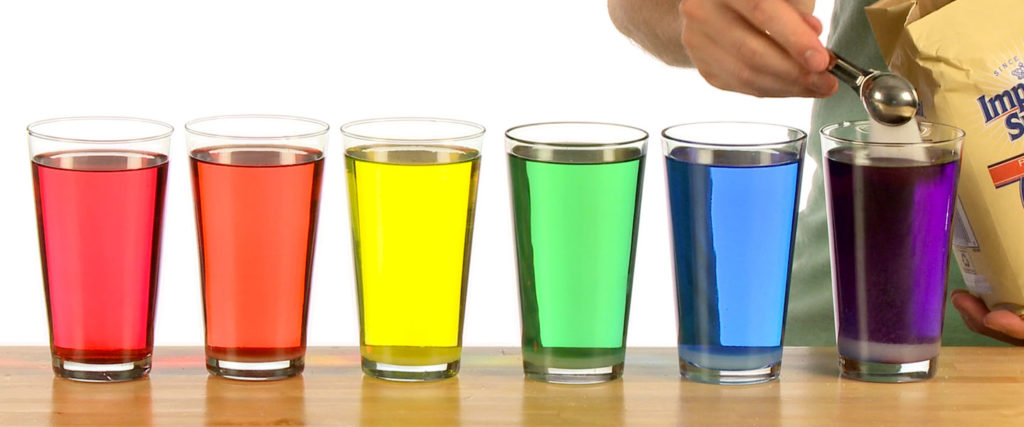
The first of the six glasses will be just colored water with no sugar. The second color receives one rounded teaspoon of sugar. The third color receives two rounded teaspoons of sugar. The fourth gets three teaspoons and so on to five teaspoons of sugar in the last glass. Stir the solution in each glass until the sugar is completely dissolved. NOTE: Using warm or room temperature water will speed up this process.
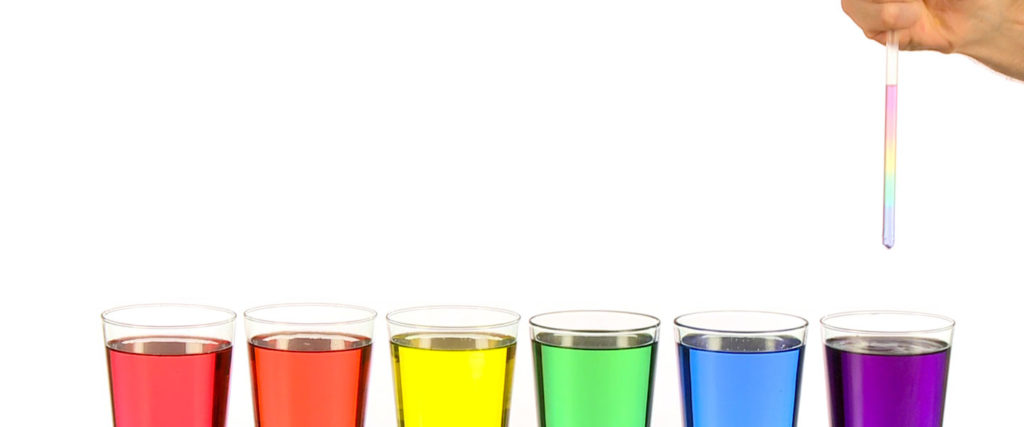
Grab the straw and, if you haven’t already, remove the wrapper. Hold the straw near one end, wrapping four fingers around the straw and placing your thumb over the straw’s top opening. To make your Sugar Rainbow, lift your thumb off the opening, dunk the lower end of the straw about 1” (3 cm) into the plain water. Cap the straw firmly with your thumb, lift it out of the water, and dip it quickly into the 1 tsp solution. This time, go a little deeper than you did into the first glass. You want the layers to be about the same thickness. With the straw in the liquid, lift your thumb but quickly replace it. Lift the straw and you’ll have the first and second colored solutions in a stack inside the straw. Continue the dipping process until you have all six colored solutions inside the straw.
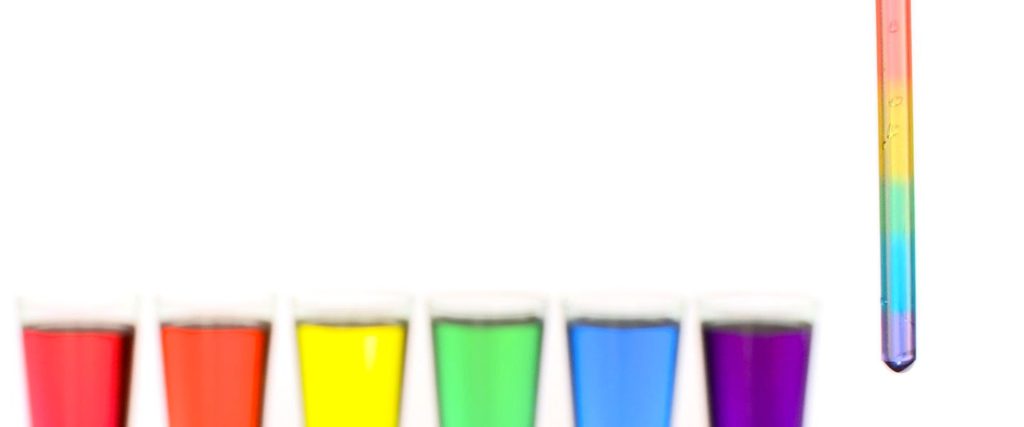
It’s a density column of sugar water, a Sugar Rainbow!
When you’re ready, hold the straw over the dish and lift your thumb to empty the straw. Rinse it and make another one.
Density is the measurement of how much “stuff” is packed into a measured space. That’s how we get the equation for density: Density = Mass (the stuff) ÷ Volume (a measured space). Nearly every substance and material imaginable has a different density. This is especially true for the six solutions you made using sugar and water.
By increasing the amount of sugar in the solution but keeping the amount of water constant, you create solutions that have increasing densities. The more sugar that’s mixed into a measured amount of water, the higher the density of the mixture. As the Sugar Rainbow reveals, a solution with a low density stacks on top of a mixture with a high density.
So, density explains why the solutions stack on top of each other inside the straw, but what keeps the solutions in the straw? You could expect them to just pour out of the straw as you lift the straw from a solution. However, thanks to cohesion (similar molecules attracting each other) and adhesion (different molecules attracting each other), there is surface tension sealing the water at the bottom of the straw. The surface tension is strong enough to help hold the solutions in the straw… as long as air pressure inside the straw is lower than the air pressure outside the straw. Gravity tugs the solutions downward which creates a slight vacuum in the empty part of the straw. That lowers the air pressure inside the straw which is why you need your thumb to cap the straw. This prevents air pressure from equalizing inside the straw. Remove your thumb, air pressure equalizes, and gravity simply moves the colored solutions out.
Use a turkey baster as a replacement for the straw to slowly layer the colored sugar solutions into a larger glass to create an even bigger rainbow. Hold the tip of the baster against the side of the container close to the surface of the liquid already in the glass. Squeeze the baster gently so the water flows slowly down the side of the container and then onto the previous layer. If you try to rush it, the layers will just mix together. Rinse the baster between each layer. Move the baster upward on the side of the glass as needed so it doesn’t touch the surface of the solution. Layer all the sugar solutions in the same way. This can be hard to do but it’s worth the effort when you finish. Get some pictures!
A dramatic salt water density change can be experienced in real life. While humans will (sort of) float in an ocean, they really float in bodies of water like Utah’s Great Salt Lake and the Dead Sea in Israel and the West Bank. They are so salty that it’s nearly impossible to sink in them! Just be sure to rinse off really well when you get out.